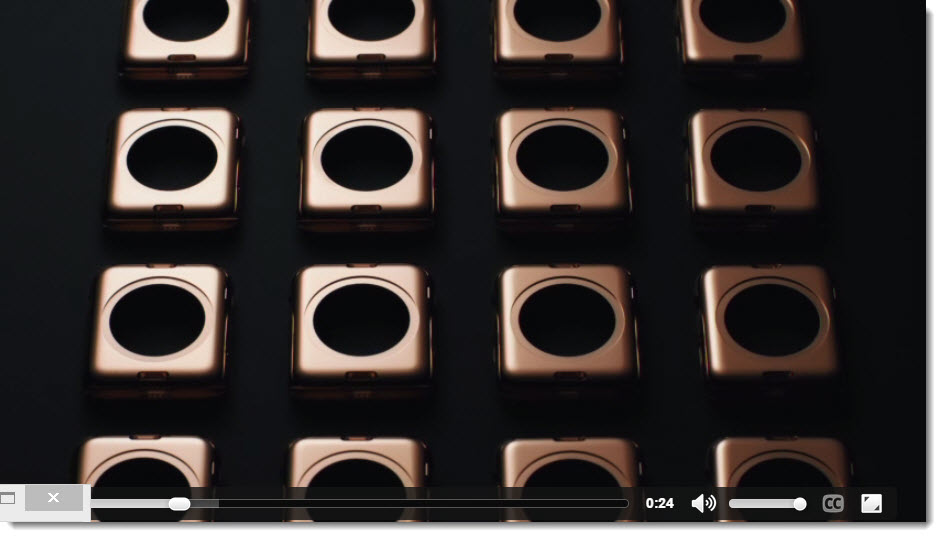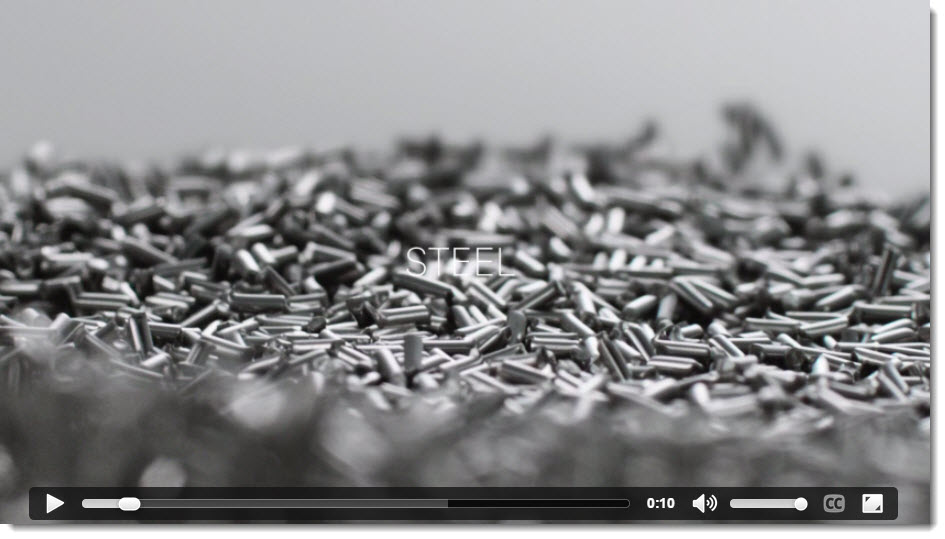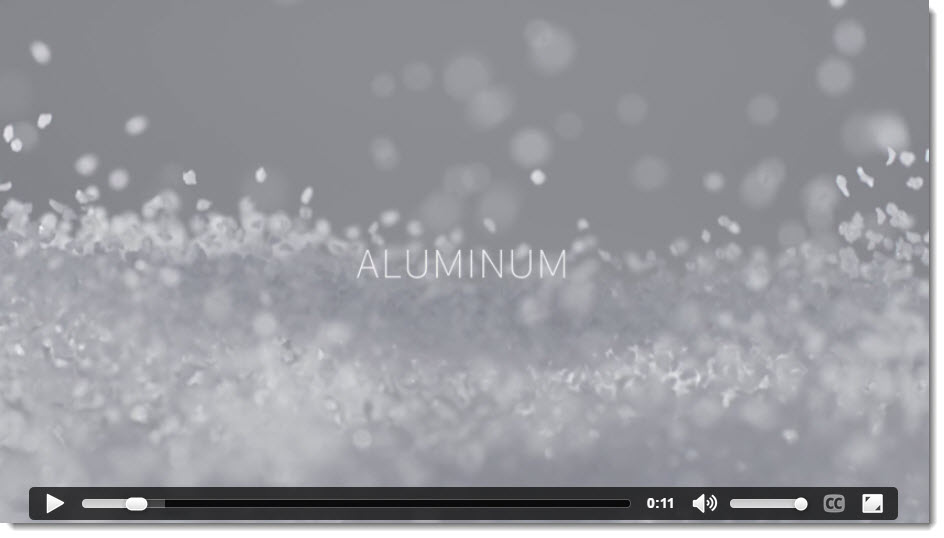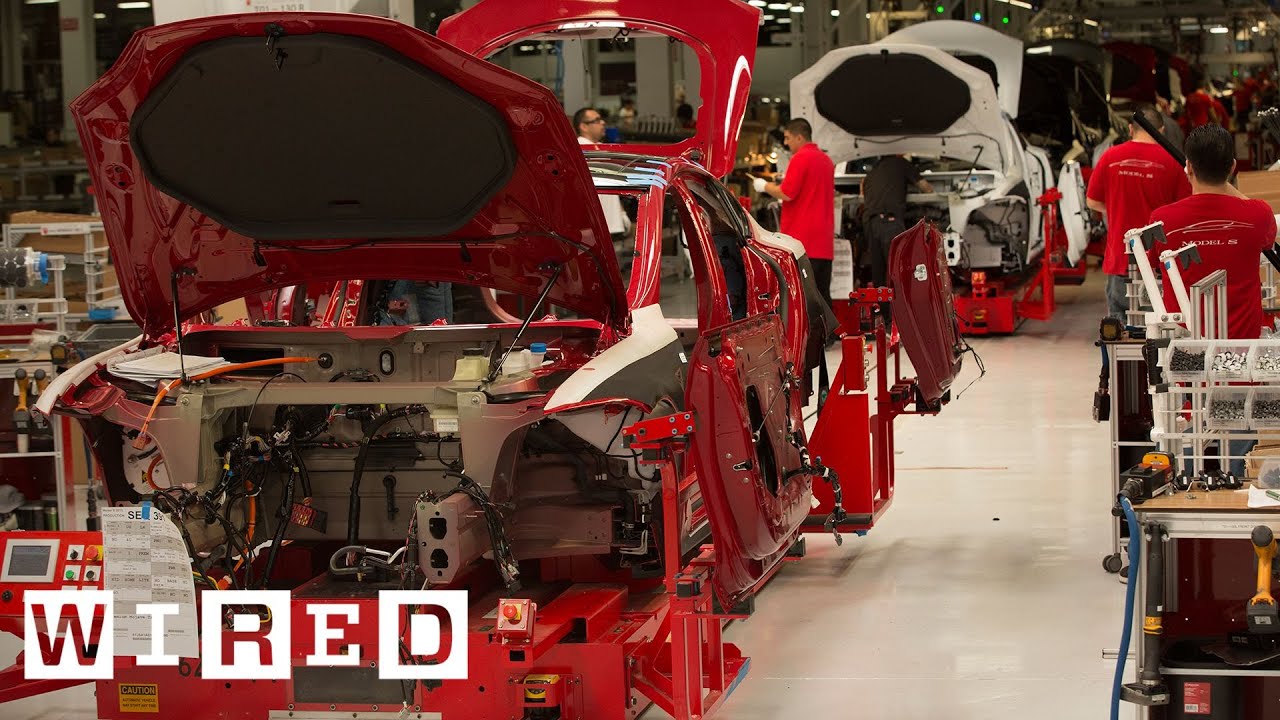High Tech Manufacturing: The Apple Watch

on Sunday, 15 March 2015.
THE APPLE WATCH: HOW IT’S MADE
 This article was written by Greg Koenig, and reposted here with terms highlighted for high school manufacturing students. This is an excellent article that tries to fill in the blanks on how the Apple watch is manufactured. More about the Author can be found here. This is Greg’s take on filling in the blanks as to how the Apple Watch is made, and may not be accurate, but the description of the processes involved is spectacular!
This article was written by Greg Koenig, and reposted here with terms highlighted for high school manufacturing students. This is an excellent article that tries to fill in the blanks on how the Apple watch is manufactured. More about the Author can be found here. This is Greg’s take on filling in the blanks as to how the Apple Watch is made, and may not be accurate, but the description of the processes involved is spectacular!
The excerpt below is only about the Gold version of the watch. If you want to see the whole article, including the other watches, it can be found here at Greg’s blog: http://atomicdelights.com/
Again: This content was provided by Greg Koenig, and the videos linked below take you directly to Apple’s website.
| Apple is the world’s foremost manufacturer of goods. At one time, this statement had to be caged and qualified with modifiers such as “consumer goods” or “electronic goods,” but last quarter, Apple shipped a Boeing 787’s weight worth of iPhones every 24 hours. When we add the rest of the product line to the mix, it becomes clear that Apple’s supply chain is one of the largest scale production organizations in the world.
While Boeing is happy to provide tours of their Everett, WA facility, Apple continues to operate with Willy Wonka levels of secrecy. In the manufacturing world, we hear rumors of entire German CNC mill factories being built to supply Apple exclusively, or even occasionally hear that one of our supplier’s process experts has been “disappeared” to move to Cupertino or Shenzhen. While we all are massively impressed with the scale of Apple’s operations, there is constant intrigue as to exactly how they pull it all off with the level of fit, finish and precision obvious to anyone who has examined their hardware. This walkthrough is a detailed narration of what we see in Apple’s Watch Craftsmanship videos. Of course, we only get to see a mere fraction of the process; I’ve tried to provide plausible explanations for the likely steps taking place between the processes shown on film, but these are assumptions and are included only to provide a more satisfying and complete narration. |
|
Gold Gold has always been the wrong metal to make a watch out of; its low yield strength and softness is incompatible with the tremendous amount of abuse an object worn on the wrist receives on a day-to-day basis. Driven by a history of desire going back millennia, alchemists and metallurgists have alloyed pure gold with nearly every combination of metals on the periodic table in order to overcome these limitations. The standards for 18 karat gold allow for a tremendous amount of leeway in producing innovative alloys (which may be comprised of anything, as long as the final product contains 75%-79.99% of pure gold by weight), and major producers of gold goods have used that flexibility to each create proprietary formulations in an attempt to gain competitive advantage. Rolex built an in-house foundry at their Plan-les-Ouates complex in Geneva to produce all of their precious metals. Hublot has trumpeted their composite ceramic “Magic Gold” as being significantly more durable than anything else available. Recently, Apple patents were uncovered detailing a Metal Matrix Composite process to produce 18kt standard compliance gold with a significant weight reduction and durability increase. For the Watch Edition however, Apple appears to have eschewed any revolutionary alchemy and instead, applied an innovative work hardening process to create gold that is (claimed to be) significantly harder than the typical 18kt used by other watchmakers. The first portion of the Gold video is carried by the beautiful alloying process and Ive’s meditative voice; at the 1m15s mark however, things begin to get interesting. Work hardening is one of those counterintuitive industrial processes where we take an undesirable aspect of a material and Judo it into a significant improvement. As the gold is cast into ingots, the crystalline lattice structure of the alloy is nearly perfectly aligned. What Apple is about to do is introduce – in a highly controlled and precise manner – defects in that lattice (known in the art as “dislocations”). The effect is to harden the material by giving future impact events or stresses a limited number of spots on the lattice to start (technical term: nucleate), and if they do start, very little room to propagate. You can experiment with this yourself using a metal paperclip- start bending the paperclip back and forth and you’ll notice it gets ever so slightly more difficult to bend as you repeat the process. Eventually, you will create so many dislocations in the metal that the part will fracture into two pieces, but for a short period, you will have work hardened that section to a point where some potentially desirable material changes would have taken place. Add a tremendous amount of precision, equipment capable of applying thousands of tonnes of force and replace the paperclip with a US$50k ingot of gold alloy and you’re working at Apple.  The process Apple shows begins with the raw cast ingots getting machined with an index cutter face mill to a very precise thickness. Casting is a process that doesn’t offer the level of precision Apple needs for the next step and this machining allows them to control the dimensions of the ingot to within 0.01mm. This level of precision is necessary because any variations in the surface of the ingot would create variations in the hardness across the final part.  The actual squeeze work hardening process likely takes a number of passes through the roller press die Apple shows in the single shot above. It’s also sort of boring as it’s just a chunk of dull golden metal passing back and forth between two rollers, flattening a few microns with each pass. When the process is complete however, Apple is left with a flattened ingot of gold alloy that has a controlled level of hardness and a precise thickness.  The video skips what are most likely a few steps to show us the flattened ingots having been processed into blanks that are just now starting to look like Apple Watch cases. We get a few shots of the case blanks and -interestingly- we see freshly machined surfaces that change. In the first shot of the blanks, the flats and sides have tool marks and sharp edges, but as we move the the ultrasonic density scanner, those edges have been very precisely chamfered off into bevels. This strikes me as odd; why remove the blank from a CNC mill to do the bulk of machining only to put it into another mill to chamfer the edges? In my mind, it’s more likely Apple made a slight process change at the factory while the film crews were shooting.  In the above shot, blanks are placed in an immersion ultrasonic tester. What Apple is looking for is the presence of voids or density variances within the structure of the blank that, under stress, could lead to part failure or surface defects as material is removed in further machining processes. This level of inspection is, to put it mildly, fastidious beyond where most other companies would go (save Rolex). Immersion ultrasonic inspection is typically reserved for highly stressed medical implants and rotating components inside of aircraft engines; not only does this step take time, it also is typically performed by custom built machines of tremendous expense.  With very precise blanks in hand, we move to a CNC mill. In the above shot, we see the Watch held via the center hole while a custom shaped end mill creates the signature full-radius edges. Given that this operation is taking place on a high column work holding fixture, I suspect this is a 5 axis mill and further steps in this operation will cut the outside pockets for the button, digital crown and speaker/microphone port on the side of the case.  Apple dispenses with further machining shots of the case to bring us a detail shot of the Digital Crown having the precise, grippy serrations cut. It’s hard to tell given the shot, but the crown appears to have already gone through the polishing process; polishing the crown after the serrations are cut would bork up the precise edges and Apple is relying on the sharpness of that edge to make the Digital Crown useable with the tip of one finger. The cutter itself appears to be a custom profile key-set cutter with a meaty center around the arbor to increase rigidity and tool-life.  Apple chooses not to show us the manufacturing of the clasp components, processes that I think would be more interesting than how the watch case is made in some ways. Given the complex surfaces of the Modern buckle, this might be the first example of Apple using surface profiling tool path in order to machine a component €” part of Apple’s secret to attaining scale and maintaining amazing quality is that they keep the actual machining operations restricted to relatively simple 2.5D tool path with complex curves produced by extrusion or stampings, which can be made possible with the help of a metal stamping manufacturer. If the Modern buckle is fully machined, this requires far more sophisticated and time consuming 3D milling.  The manufacturing portion of the Gold video ends with the case being polished by hand. As is shown in other Apple manufacturing videos, the company is expert in using automated polishing techniques across their entire product range, so it’s difficult to say if the Edition models are polished fully by hand or if the hand work is simply a final buffing more valuable for letting skilled eyes very closely inspect the final product. |
|
Other Apple videos can be seen here: STEEL: Aluminum: |
![]()












